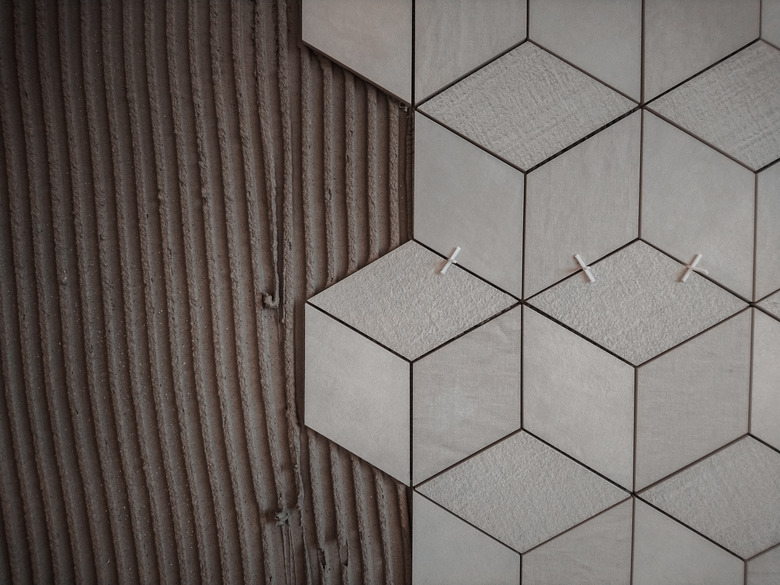What Is The Ratio Of Water To Mortar For Thinset Tile Installation?
We may receive a commission on purchases made from links.
Thinset mortar is a blend of cement, fine sand and a water retaining agent, often a polymer, that permits the cement to hydrate properly. When installing tile, the ratio of water to mortar must be just right. Tile that is installed using thinset sticks to what is often called a backerboard spread with a layer of thinset mortar.
Tip
Thinset usually comes in bags of 25 or 50 pounds. Many tile manufacturers recommend that you use 5 quarts of cool water to 50 pounds of thinset mortar. For smaller quantities, 4 ounces of water to 1 pound of dry thinset powder should do the job.
Mixing Thinset Mortar
Mixing Thinset Mortar
Most bags of thinset mortar come with instructions for mixing the entire bag. When it comes to mixing a 50-pound bag for tile, add 5 cups of cool water. If you have a small amount of tile to set, use 4 ounces or 1/2 cup of water to 1 pound of dry thinset powder. Using one part water to four parts thinset powder should work for most quantities.
When mixing thinset powder with water, add the powder first and then pour in the water slowly. If you move too quickly, you will create excess dust. Stir slowly until the powder becomes wet. To stir the mixture, it's best to use a variable speed drill mixer at low speed. This will prevent air from seeping into the mortar and weakening the bond.
Mix the powder and water until the mixture is the consistency of thick peanut butter. If the mortar on your trowel doesn't drip off but can be shaken off, you have the right ratio. Once the thinset is mixed, allow 15 minutes for the thinset to absorb the water. After 15 minutes, give the thinset another slow stir with the drill. Once you've set your tile, your tile will be ready for grout to be applied.
What Is Thinset?
What Is Thinset?
Thinset is often used for tiling jobs that call for a thin layer of mortar, and it is usually less expensive and faster to use than mortar when installing tile. Thinset contains polymers, a water retention compound that allows cement to absorb the proper amount of water it needs to set. Other phrases that are synonymous with thinset besides thinset mortar are thinset cement, dryset mortar and drybond mortar.
In order for thinset to work properly, it's important that the polymers contained in thinset be properly mixed. That's why you must be careful not to stir too hard or too quickly.
Thinset mortar is less expensive and faster than mortar applications for many tiling jobs. There are different combinations of polymers in thinset mortar, so it's a good idea to check with your tile manufacturer to see what type of thinset mortar is recommended.
Thinset Best Practices
Thinset Best Practices
Weather is important when mixing thinset. Thinset can't be used outdoors when the temperature is below 40 degrees Fahrenheit or above 95 degrees. Do not mix thinset in the sun or it could cause the mixture to form too quickly. You must make sure the water you use is cool. If the mixture hardens too quickly, throw it away and start over.
Thinset works well for tiles that will use a thin layer of mortar, usually not less than 3/16 of an inch. To get the right amount, use a 1/2 x 1/2-inch notched trowel for tiles up to 16 square inches and a 3/4 x 3/4-inch notched trowel for larger tiles.
